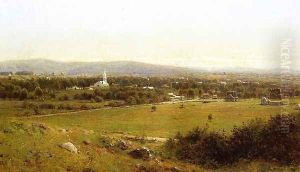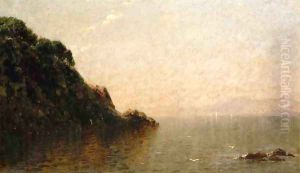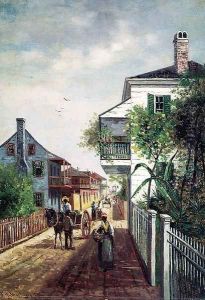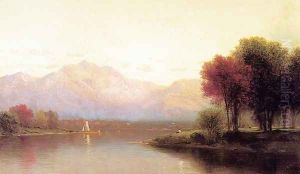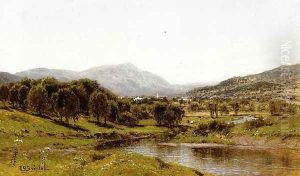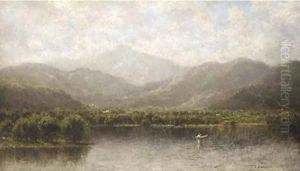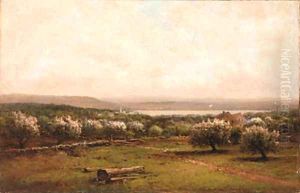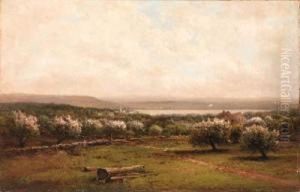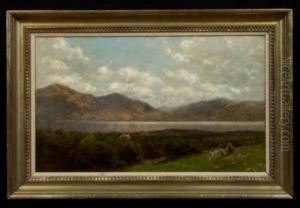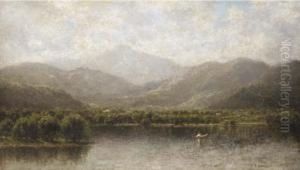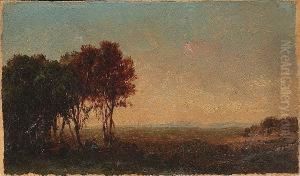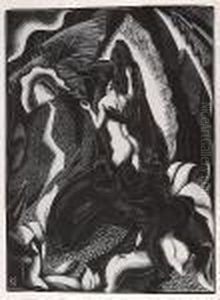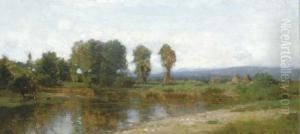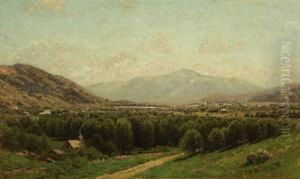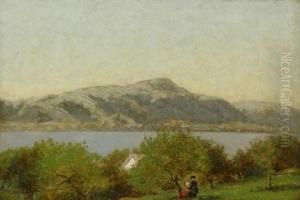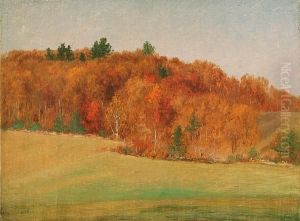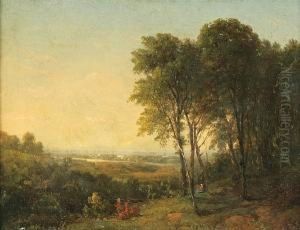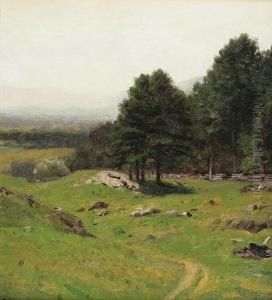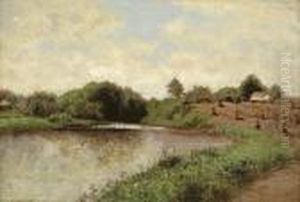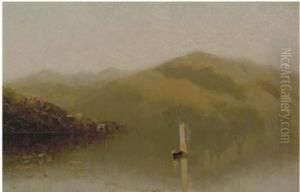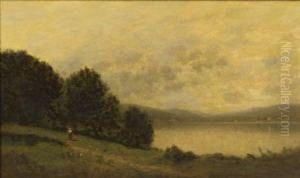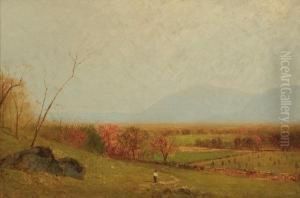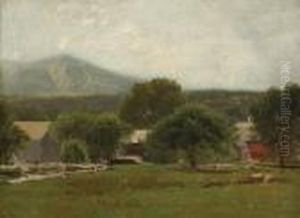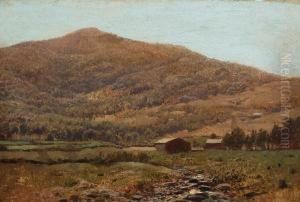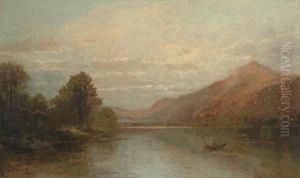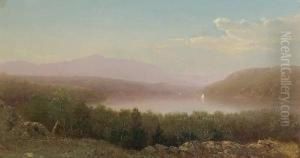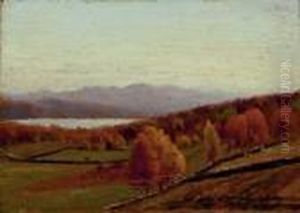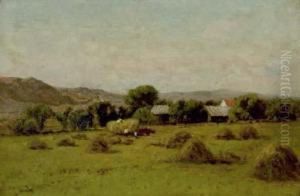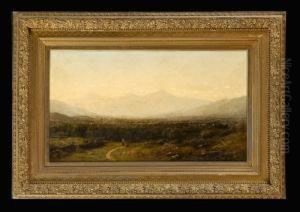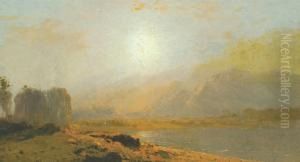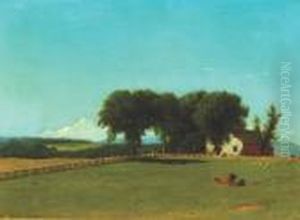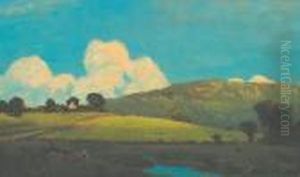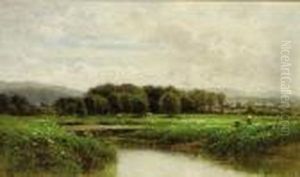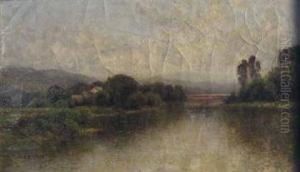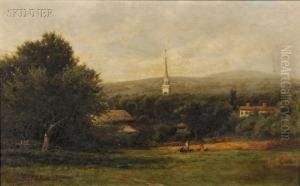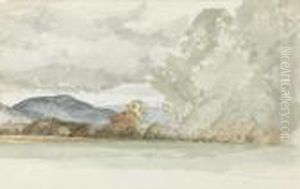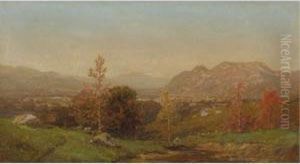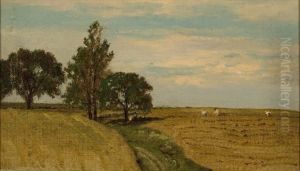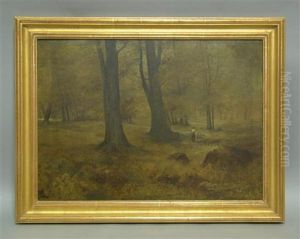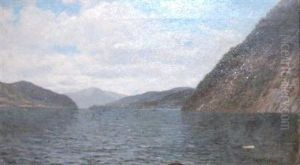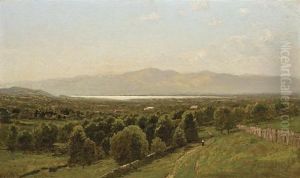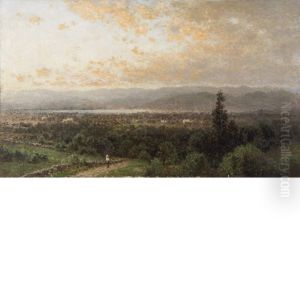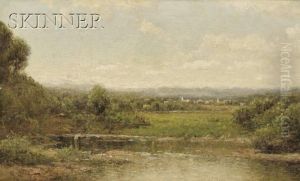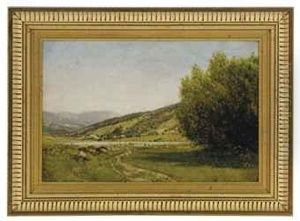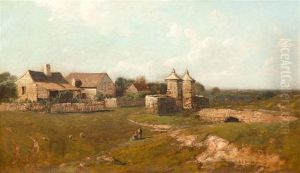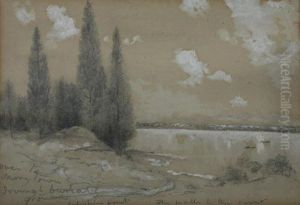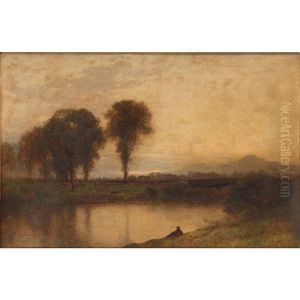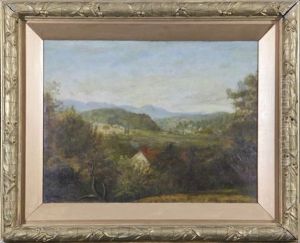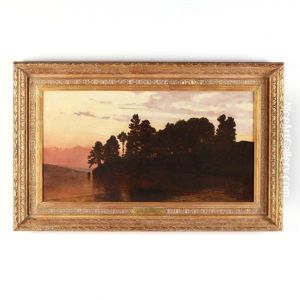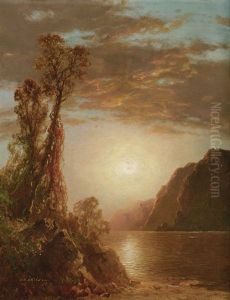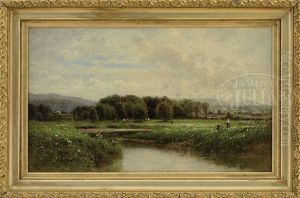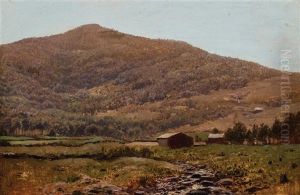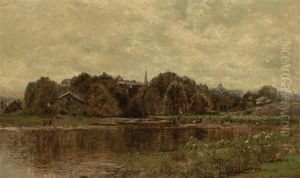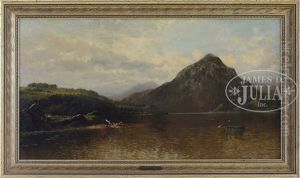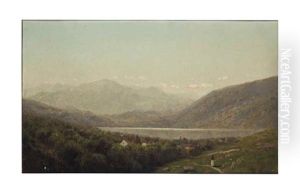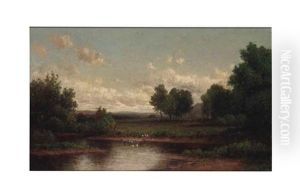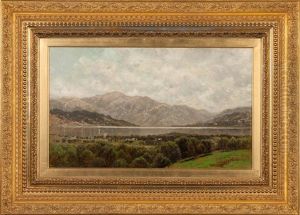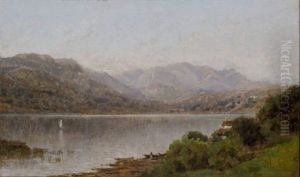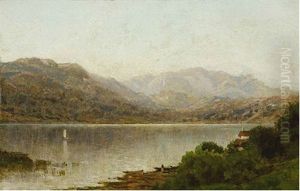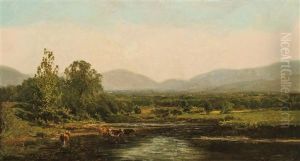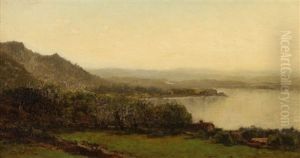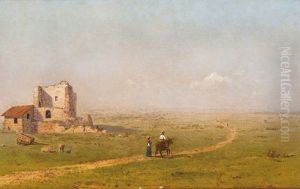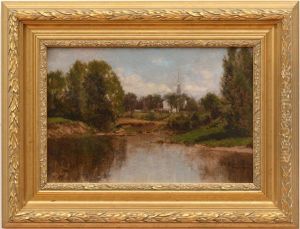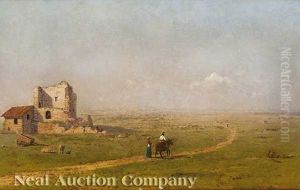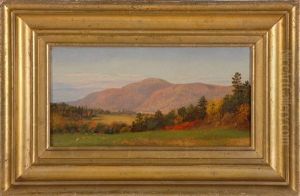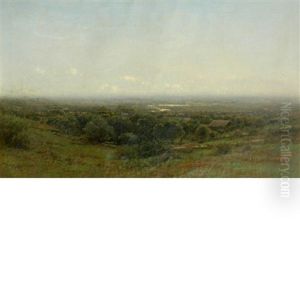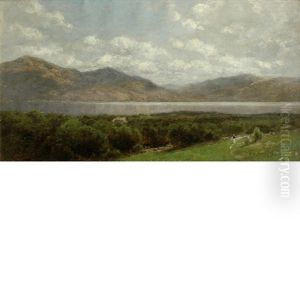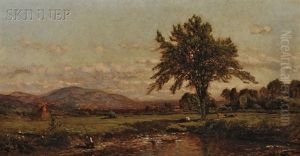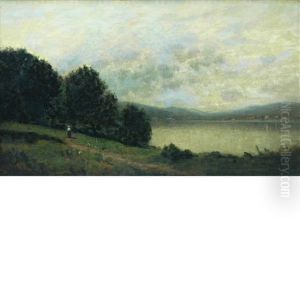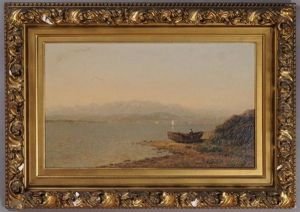John Bunyan Bristol Paintings
John Bunyan Bristol was an American artist known primarily for his landscape paintings. Born on June 24, 1826, in Hillsdale, New York, Bristol grew up in a rural setting that would later influence his work as a landscape painter. Despite being largely self-taught, Bristol developed a detailed and realistic style that captured the tranquil and picturesque qualities of the American Northeast, particularly the Adirondack Mountains and the Hudson River Valley.
Bristol was part of the second generation of the Hudson River School, a group of artists who were inspired by the romanticism of the natural world and sought to represent it with a sense of idealized beauty. While he was influenced by the works of Thomas Cole and Asher B. Durand, Bristol's approach was noted for its own distinct clarity and calmness, without the dramatic intensity often found in the works of his contemporaries.
Throughout his career, John Bunyan Bristol exhibited at various institutions, including the National Academy of Design, where he became an associate member in 1858 and a full Academician in 1861. His work gained appreciation for its fine detail, serene compositions, and the skillful use of light to evoke a sense of peacefulness.
Bristol traveled extensively within the United States to find subject matter for his paintings. He was particularly drawn to the wilderness areas of New York State, which provided him with ample inspiration for his art. Despite the rise of other artistic movements in the late 19th century, Bristol remained committed to his style, continuing to produce landscapes that appealed to patrons who were nostalgic for depictions of the untouched American landscape.
John Bunyan Bristol's contribution to American art was modest but significant. While he may not have achieved the same level of fame as some of his Hudson River School peers, his work remains valued for its faithful representation of American scenery and its embodiment of the values and aesthetics of the Hudson River School tradition. Bristol passed away on March 12, 1909, leaving behind a body of work that continues to be appreciated by collectors and art historians for its tranquil beauty and technical precision.
